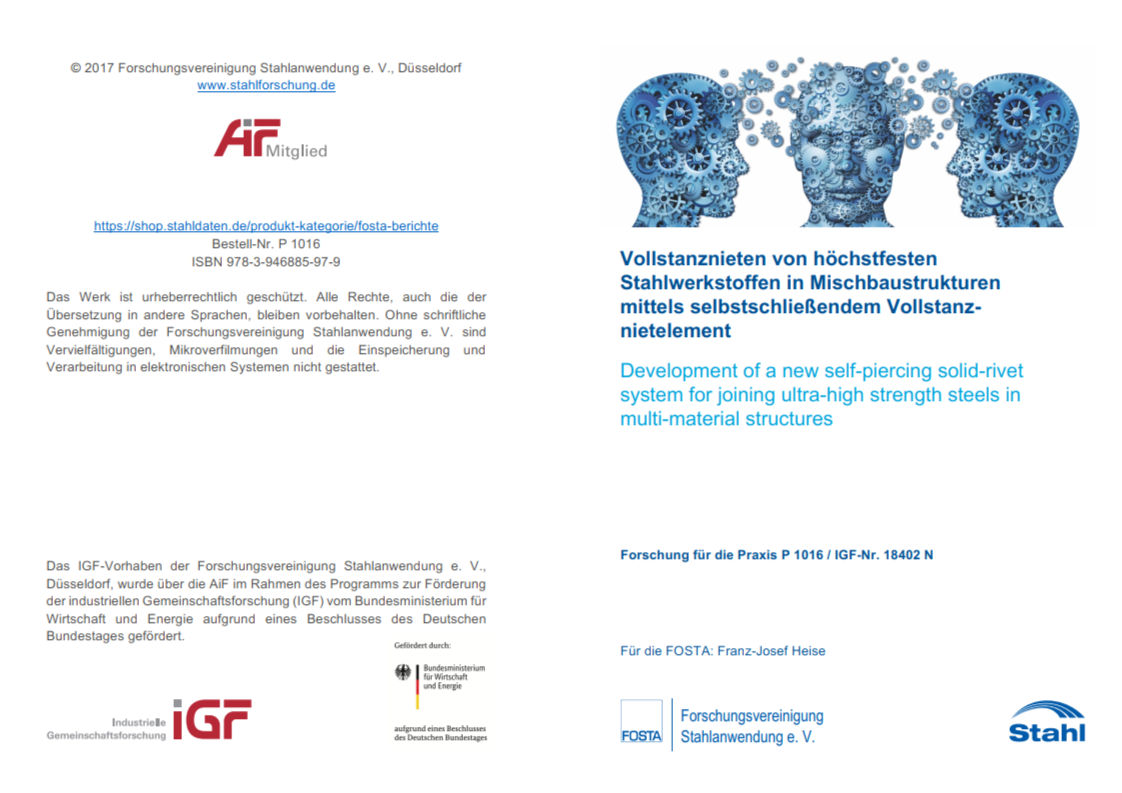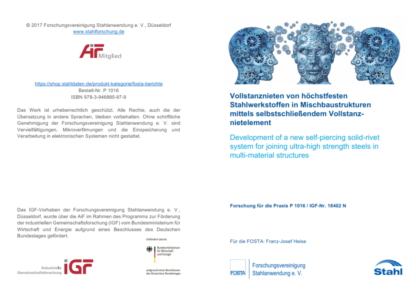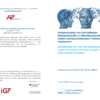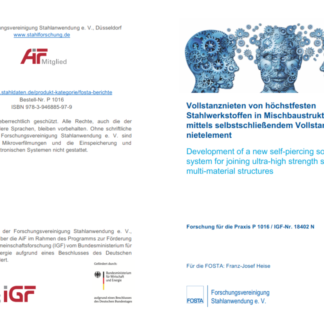Description
P 1016 – Development of a new self-piercing solid-rivet system for joining ultra-high strength steels in multi-material structures
The automobile industry focuses on light weight constructions because of the legal requirements to reduce the production of carbon dioxide. The decrease of carbon dioxide production to average 95g CO2/km in the passenger car market is determined until 2020. Because of its 30% fraction of the gross vehicle weight the body in white has the biggest potential for light weight constructions using ultra high strength steel in thin sheet thicknesses and lightweight materials like aluminum. Especially the multi material construction of press hardened steel and aluminum combined with the adhesive bonding leads to economical light-weight solutions. A suitable technology for joining of this material combination is the solid self-pierce riveting in combination with adhesive bonding. However, this technology leads to gaps between the joined parts, and therefore to a poor adhesive bonding, especially when using particularly thin joining part materials.
The aim of the research project is the development of a modified self-pierce riveting technology for joining ultra-high strength sheets with aluminum alloys. This is done by modifying the self-pierce riveting with solid rivets in such a way that it works without embossing ring on the die side tool. For this purpose the embossing contour is arranged directly under the head of the rivet. Compounds which are produced with the novel method of self-locking self-pierce riveting should then show low processrelated deformations and a good adhesive bond.
In the research project, the numerical simulation was used to optimize the geometry of the new riveting technology, which was validated by experimental investigations. On the basis of process analysis, the flexibility of the developed method was determined. In addition, the hybrid joining process was optimized and the bonding properties of the process were recorded. A joining technology was developed which can be used to generate efficient and economical connections of 22MnB5 sheets and aluminum sheets.
Published in:
2017
Authors:
Prof. Dr.-Ing. G. Meschut




